A Blog post by color hair hazards on the existing hazards in the featured film Captain 👮 Phillip……
Captain Phillips the emotionally charged story of Somali pirates taking an American sea captain hostage, while concurrently exposing the underlying economic divide that sets the event in motion. The story begins in Vermont, where Captain Phillips leaves his family to sail the Maersk Alabama with cargo mainly food aid halfway around the world to Africa. At the same time in Somalia, a former coastal fisherman, Muse aims to overtake one of the high-value ships that passes through the nearby coast every day. At the heart of the confrontation between Phillips and the desperate Somali pirates who take him hostage, reveal the many hazardous conditions that the men and their crew are faced with. The possibility of causing injury to themselves, the ship, loss of cargo and not reaching the planned destination is inevitable. Ignorant of the many potential hazards in the Somali basin, Captain Phillips, risk assessment was poor, having only one contingency plan in place to curb the risk, much more could have been done to prevent this situation if a proper risk assessment was implemented. A trip that had few initial ergonomic and chemical hazards is now suddenly faced with biological, psychological and physical hazards that violates the Occupational Health and Safety Act (OSHA) 2004 as amended in 2006.
Now lets identify the hazards found in the show…..
Biological Hazards
A Biological hazard as defined by the Office of Disaster Preparedness and Management is the “processes of organic origin or those conveyed by biological vectors, including exposure to pathogenic micro-organisms, toxins and bio-active substances, which may cause the loss of life or injury, property damage, social and economic disruption or environmental degradation.”Simply speaking a biological hazard acts via agents such as plant, birds, humans, bacteria, insects and viruses. Within the movie Captain Phillips each interaction between the Somali pirates and the American crew could be interpreted as a possible biological hazard.
The poor hygienic practices possessed by the Somali pirates could be observed through the entirety of the show. These individuals were subjected to moist, humid conditions while continuously wearing the same articles of clothing. Unclean clothes could harbour microorganisms which could lead to skin infections, mold on clothing and in the case of one of the pirates chain smoking, an unpleasant body odor.
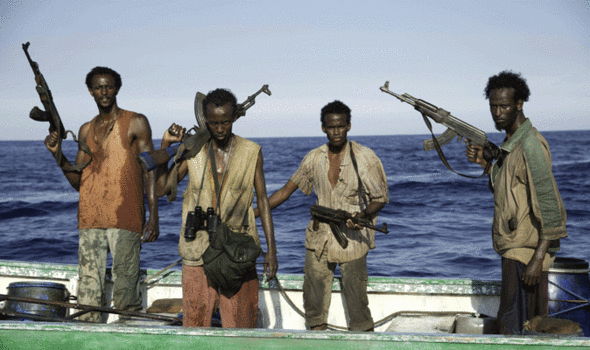
Image 1 shows the depicts the hygienic conditions of the pirates.
While on the life boat, Captain Phillips requested some water from the Somali pirates; which he then received. However, this communal water could facilitate the transfer of various pathogens between individuals. It was also observed that during the selection process Muse chose a crew member from another village. Each individual is exposed to different types of bacteria within his/her home or environment, therefore individuals in another contextual environment may not share the same resistance to said bacteria. The sharing this water could have led to the spread of the common cold, hepatitis A, B or C and Tuberculosis. Similar to the spread of the Yellow Fever virus, to the indigenous from the Europeans, Captain Phillips could have also contaminated the water source during consumption. Limited border control and protection lead to the spread of potentially dangerous diseases by both parties
Image 2 shows possible spread of blood borne diseases to Captain Phillips.
The spread of blood borne diseases could be seen as a large biological hazard. The assassination attempt of the Somali pirates lead to Captain Phillips being covered in the splatters of Somali blood. Accidentally swallowing this blood along with it having any contact with an open wounds or sores, could have led to the transfer of blood borne diseases such as, Zika, H.I.V, Hepatitis B and viral hemorrhagic fevers. The process of cleaning the possibly infected foot injury of one of the youngest pirate without proper safety wear such as gloves could have also resulted in the transfer of such diseases.
Chemical Hazards
Chemical Hazards are substances,mixtures and particles that are used in the workplace that can cause problems to health if not dealt with correctly. There were not as many chemical hazards presented in comparison to the other hazards in the movie, however one was noticed that must be highlighted.
The chemical hazard highlighted was the smoking of cigarettes inside an enclosed lifeboat used by the pirates to kidnap the American captain. Tobacco smoke contains many chemicals that are harmful to smokers and non-smokers. There were at least 4 people inside the small enclosed boat without proper ventilation. The risk of inhaling the smoke given off by a burning tobacco product can produce hazards such as itchy running eyes, coughing, cancer, stressed lungs and chronic bronchitis. The cigarette smoker not only possessed a risk to himself but to others around him.
Image 3 depicts the consumption of a cigarette.
Physical Hazards
Physical Hazards refers to a type of occupational hazard that involves environmental hazards that can cause harm with or without contact and from our definition we were able to notice some factors:
The Physical Hazards in Captain Phillips include:
- Injury – A wrench to the head and broken bottles stuck under foot. From watching the movie it was observed that during a disagreement one of the pirates struck another with a wrench across his head, causing an open wound. Having sustained such an injury, it can lead to severe brain damages and concussion, that is, a violent shock from a heavy blow. Brain damage can reach to the point where an individual can end up in a coma or a minimally responsive state and may remain dependent on the care of others for the rest of their lives. Bodily harm was further caused when one of the Maersk Alabama crew members was instructed to break a piece of glass at the entrance of the engine room door. This resulted on the ill equipped bare footed youngest pirates to step on the glass which caused deep cuts under his foot which produced excruciating pain. According to the OSHA 2004 as amended in 2006 a young person has a high risk if getting injured and employer (Muse) should take special care of them which in this case he did not although advised to by Captain Phillips. In the long run, the open wounds under his foot could lead to serious infection, also, it could result in bleeding to the death if not treated.
- Heat: In the movie, it was noted that the aspect of heat was presented as a hazard in two particular places. The first observation was when Muse and his crew insisted to search the entire ship with particular emphasis on the engine room, accompanied by Captain Phillips in search of his hiding crew members. In an act of survival one of the members from the crew switched of all the power. This resulted in severe heat on the ship as there were no ventilation; making the pirates and the captain sweat uncontrollably. Secondly, as the pirates’ boat was washed away, a lifeboat was used in place as a way for Muse and his crew to get away. While a deal was being negotiated between Captain Phillip and the pirates, the latter smartly tricked Captain Phillip’s crew members and abducted their Captain into the lifeboat. The air vents/windows inside the lifeboat were closed, because of Muse orders to keep them closed, as he thought Captain Phillip would have used it as a means to escape . This was hazardous to everyone in that lifeboat as it caused heat, dehydration, and a downpour of sweating. The OSH Act section 36 has strict guidelines concerning proper ventilation in a workplace.
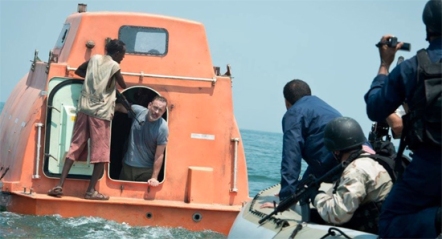
Image 4 shows the means of ventilation on the lifeboat.
Image 5 shows Captain Phillips showing Muse around the ship a requested.
- Noise: There were a lot of instances where loud noises could of been heard. These include situations such as gun shots being fired and the pirates shouting loudly in close proximity to at Captain Phillips. One particular scene was of significant importance as it showed a clear noise hazard, it entailed a gun being fired close to Captain Phillip’s ears which causing immediate pain and disorientation. This can result to severe hearing problems in the future. Furthermore, the constant loud talking by Muse and his crew in close quarters can be regarded as another aspect of loud noise. For instance, the constant shouting of “Shut up Irish”.
Image 6 shows the close proximity of the gun to head ratio before the gun was fired.
- Temperature: The Captain experienced cold stress when he jumped into the ocean in an attempt to swim back towards his ship. This caused his normal body temperature to decrease, which is harmful to the body. Cold stress can lead to either permanent tissue damage or in some cases death.
Image 7 shows Captain Phillips immersed in cold water.
Psychological Hazards
The movie Captain Phillips is the translation of a true re-enactment of the hijacking of the 2009 Somali hijacking of the American cargo ship, Maersk Alabama. Critics and film analyst, tend to pay close attention to the psychological trauma faced by Captain Phillips and his crew members. However, with critical analysis, it is evident that all groups found in the film do indeed experience some form of psychological trauma as a result of varying psychological hazards (based on the outline of the Operational health and safety act of 2004 as amended 2006) which may have already existed or come about due to actions of other groups as the case may be.
Firstly, however, the term psychological hazard must be defined. A psychological hazard according to www.physiotherapyalberta.com, is any hazard /dangerous element that affects the mental well being or mental health of the worker by overwhelming individual coping mechanisms and impacting the worker’s ability to work as a result of health and safety issues. The main causes of psychological hazards are stress, uncertainty in the workplace, a lack of control and fear.
The film, Captain Phillip, whilst containing a host of hazards in general, is dominated with the element of psychological hazards. The movie in essence is a drama by genre. Therefore, a lot of the dramatic experiences, given the setting of ‘the workplace’, are as a result of existing psychological hazards. The (3) main groups we shall consider are:
- Captain Phillips and his crew of sea officials. (other certified co captains, the engine room engineer)
- Musa and his crew members.
- The other 20 ship crew members
Captain Phillips and his crew of sea officials
- Before Captain Phillips even sets foot on the ship, there is an early scene of him paying very close attention to the details of the job. This scene depicts Captain Phillips a bit reluctant in his body language to willingly take on the job. This early state of psychological interference, can be deemed a hazard in itself, as it can result in an individual experiencing an element of mental stress throughout the course of the job.
Image 8 depicts the geographical location if the attack.
- 2 boats approach Captain’s vessel. An early psychological hazard which Captain Phillip and his staff are exposed to were the 2 fisherman boats speedily approaching their ship on day one at sea, whilst they were conducting an emergency routine. The 2 boats speedily approach the ship and even turn on the same course as the vessel when the captain steers the ship 5 degrees leftward. A major reason why this event was a source of psychological hazard, is because the captain’s plea for assistance from the navy was initially ignored. His analysis of the situation is dismissed as simply fishermen vessels. This may have led to the Captain losing some trust in the navy a bit and as such could have left him with a high level of fear of a return of the pirates. In this case what could’ve been done better, is that the Navy personnel should’ve taken his outcry seriously the first time and sent assistance immediately rather than later.
- Return of one of the boats. The following day, one of the fisherman boats returns. However on this occasion crew members aren’t on spot to conduct procedures and therefore are left simply to go rush into hiding. Another psychological hazard on said day is the realization or reinforcement of the mere fact that the crew was entirely unarmed and unprepared to deal with invaders carrying weapons. This is evident as Captain Phillips and his sea team are shot at by the rebels and his only source of retaliation is via the use of a flare and hoses in an attempt to sink the boat of the attackers. In this case they should’ve had weapons which they may have been able to utilize if the situation arose. (P.P.E)
Image 9 shows the contingency plan of the crew to sink the small boat in aims of preventing the pirates from coming aboard the vessel
- One of the crew members is threatened at gunpoint. This could’ve easily led to fair and immense trauma.
Image 10 shows the physiological assault on the crew members.
- The rebels come aboard and Captain Phillip loses control of the vessel. (Lack of control) This would’ve been a major psychological hazard in Captain Phillip’s zeal to persist. His utmost task to ensure safety of all merchandise being transported as well as the safety of his staff had become compromised.
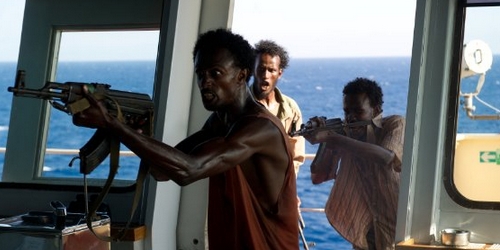
Image 11 shows the Somali pirates entering the navigation room of the ship.
- Captain Musa announces he is going to search the ship. The new captain of the ship, Captain Musa, lets it be known that he is prepared to search the entire ship for the crew members. This would’ve been a source of psychological trauma for the other crew members as they may have been eternally concerned about the prospect of them being found and held captive with the other members of the team.
- Captain Phillips is taken hostage aboard the emergency vessel. Captain Phillip finally loses any control when he is stripped entirely of his role of authority and in turn made to play the role of captive. He would’ve also been extremely fearful for his life at this point. At this point if I were Captain Phillip, I would really want to go home. What can I say 1 psychological hazard too many can really dampen the ambitions of even the most joyful of us. >_<
Image 12 show Captain Phillips boarding the lifeboat.
- Captain Phillip’s entire experience was a psychological hazard. At the beginning of the movie, it is clearly evident that Captain Phillip is by no means ambitious or passionate about going to Somalia to work. It is clear he senses the danger and was aware of the possibility of being hijacked. Hence, for a person who did not really have any great desire to be there too much, to have the worst experience of all the crew members. Threatened at gunpoint, had his duties stripped by pirates, had the safety of his men compromised, hit with the gun of the pirates, and now finally to witness the brutal murder of 4 men. These all pose a major hamper on his mental and emotional future. In other words, his entire experience at sea on this occasion, is in itself a psychological hazard to his future at sea, and as such may have made him stronger or as in other cases caused him to leave his job in fear of losing his life. (Or in local dialect, caused him to ‘Fire the wuk”)
Musa and his Crew
- The ‘Mother ship’ left them. Throughout the movie Musa and his crew attempted to gain some form of communication with the team of ‘elders’ or other pirates they were working for. This never came to pass and essence would’ve left Musa feeling a sense of abandonment. (In particular from those he trusted and depended on)
- Musa and his team were physically and mentally dejected. It’s almost to the climax of the movie at this point and Musa and his men are beginning to realize their choice to take Captain Phillip may have been a risky one. They also begin to realize that their elders and other pirates they worked with were not going to come back to their rescue nor were they attempting to communicate with them. Hence, they now decide to attempt to play into the hands of the Navy. How do they play into the hands of the Navy? Well they realize they might have had the shorter end of the stick as taking a man hostage made them terrorist, and the U.S Navy does not negotiate with terrorist. This meant that their plans had now been foiled and they had no control of their destiny. Their next bet therefore was to accept the offer of the Navy to negotiate on the terms of Musa going aboard the navy ship.
- Musa’s men are assassinated. Making his decision based on fear and opting to go aboard the U.S Navy ship in a supposed controlled environment. Musa isn’t aware that he has been tricked and as a result the US Navy is able to assassinate his men. This plunges him into deep sadness. The psychological hazard of him going aboard the U.S ship was acutely evident. Such action simply meant that he was now not in control of the entire situation which meant his own safety and the safety of his men was at stake.
Ergonomic hazards
According to the University of Chicago Environmental Health and Safety Ergonomic hazard is any workplace condition that pose a threat to musculoskeletal system of an employee such as repetitive movement, uncomfortable work stations, overcrowding and poor body positions.
Image 13 shows the ergonomic hazards imposed onto the Somali pirates.
In the movie Captain Phillips, ergonomic hazards are visible in various scenes where the Somali pirate crew is involved in strenuous positions and manual labor both on their mothership and the skiffs (rowing boat). The Maersk Alabama crew also was involved in strenuous task where their jobs require them to be on their feet. This requirement increased after the first pirate attack where they were instructed to work double shift. These hazards could cause muscle strains and possible major injuries to the musculoskeletal system in the future such as Upper Limb Disorder (ULD).
Image 14 shows the hierarchy of control
According to the hierarchy of control there are activities to reduce risks that can be used to help the crew. The first level of the hierarchy is elimination, therefore the members of the two crews could position themselves in a more comfortable position, avoid strenuous position and have a seat available to sit when their legs get tire. However, the crew cannot perform these action since it would hamper their ability to do their jobs. The second level is substitution but the duties cannot be replaced with a safer alternative since the tasks needs to be done in this manner. The third level isolation also cannot be done as the jobs cannot be kept away from workers to avoid injury since their work is needed for the ship to make its voyage. The forth level engineer or designing something to solve the workers problem of muscle strain, however, to my knowledge such technical relieve have not been invented just yet. The fifth level administration which is to arrange a system to make things better was implemented for the Maersk Alabama crew with a shift system but not for the Somali pirate crew, however because of the pirates attempted attack on the crew they had to work double shift. The final level and last resort is Personal Protective Equipment (PPE) which was provided for the Maersk Alabama crew but not the Somali pirates.
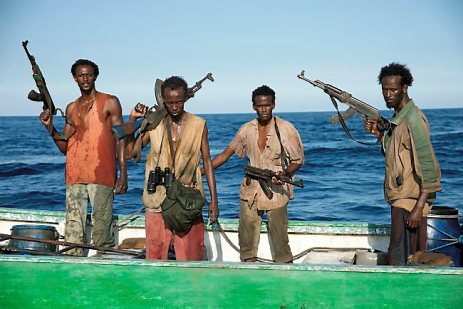
This film image released by Sony – Columbia Pictures shows, from left, Faysal Ahmed, Barkhad Abdi, Barkhad Abdirahman, and Mahat Ali in “Captain Phillips.” (AP Photo/Sony – Columbia Pictures, Jasin Boland)
Federation of Small Business (FSB) stated that overcrowding is an ergonomic hazard which could lead to stress and confrontation due to invasion of personal space, health effects caused by overcrowding. Overcrowding is seen in the movie when four Somali pirates were on a skiff which was designed to carry one person resulting in the pirates sitting in unsafe areas of the boat and almost falling overboard when the engine failed causing them to come to an abrupt stop. Overcrowding is also sighted in the scene on the pirates’ mother-ship where the entire crew of nine men were aboard the small ship and having to share this small space a confrontation occurred between the crew leaders, who constantly threatened each other throughout the movie, eventually leading to the death of one of them. To avoid such altercations the two pirate crew could have been sectioned off or been on separate ship to prevent interaction. The Trinidad and Tobago Occupational Health and Safety Act (OSHA) (2004) as amended (2006) section 5 subsection 1 to 4 gives guidelines on the space required for each person in the workplace to avoid such incidence. This analysis shows that the pirates were clearly exploited by their employer and exposed to higher risk of ergonomic injury.
In conclusion, the failed contingency plan of Captain Phillips and his crew, along with their ignored reports to the authorities resulted in each individual being exposed to both temporary and permanent hazards. Each hazard examined shows varying degrees of threats imposed on individuals which can affect the future standard of life awarded. The infrequency of pirate attacks on cargo ships should have affected the construction of a risk assessment, as it should include the likely hood of all possible hazardous situations of ships in open water. It is generally taught to members of the crew that as a means to preserve their welfare to give into the desires of pirates as cargo ships usually only have one fire arm. The biological, chemical, physical, psychological and ergonomic hazards sustained by everyone that could of been avoided had better health and safety practices been implemented.
Works Cited List
Basic Paperwork for Health and Safety.” NHS Health Scotland. NHS Health Scotland, 16 July 14. Web. 04 Oct. 2016.
Brad. “Look At Me, I’m The Captain Now.” Know Your Meme News. Chez Brger, 2016. Web. 04 Oct. 2016.
By Doing So, You Have Created a Safer and Healthier Workplace. “OSH Answers Fact Sheets.” Government of Canada, Canadian Centre for Occupational Health and Safety. Canada. CA, 2016. Web. 04 Oct. 2016.
Doucette, Chrystal. “The Top Five Types of Workplace Hazards.” Small Business. N.p., 2010. Web. 04 Oct. 2016.
Goetsch, David L. The Basics of Occupational Safety. Upper Saddle River, NJ: Prentice Hall, 2010. Print.
ODPM. “Disaster Cycles: Mitigation and Preparedness.” Environmental Hazards and Disasters Contexts, Perspectives and Management (2011): 157-96. Web.
“Physiotherapy Alberta College Association : The Movement Specialists: Home.” Physiotherapy Alberta College Association : The Movement Specialists: Home. N.p., n.d. Web. 04 Oct. 2016
“Tom Hanks Captain Phillips.” Tom Hanks Captain Phillips. Paul Greengrass, 24 Oct. 2013. Web. 04 Oct. 2016.
“Trinidad & Tobago : Occupational Safety & Health Act (Amendment).” Trinidad & Tobago : Occupational Safety & Health Act (Amendment). Trinidad&Tobago, n.d. Web. 04 Oct. 2016.
So now as you read………………….
Take a moment and close your eyes and imagine you are Captain Phillip or Captain Musa as the case may be. Picture all the hazards around and other violations of the OSH act. What would you do?
Leave a comment in the section as to what you may have done better.


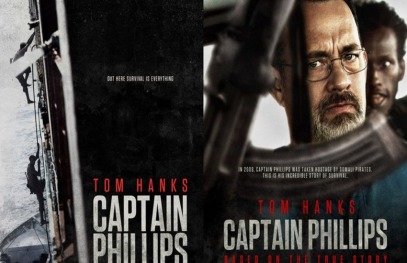
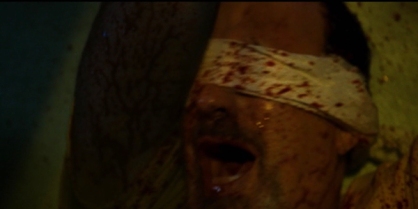

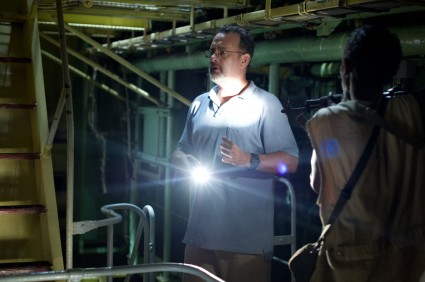
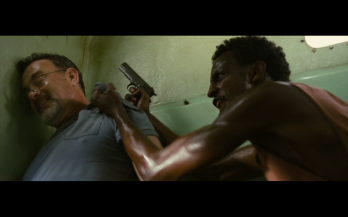
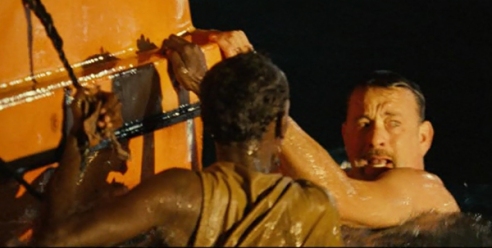
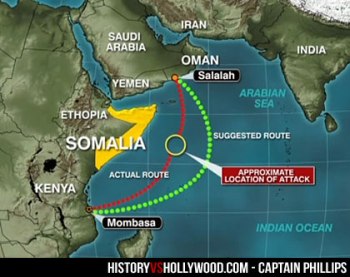
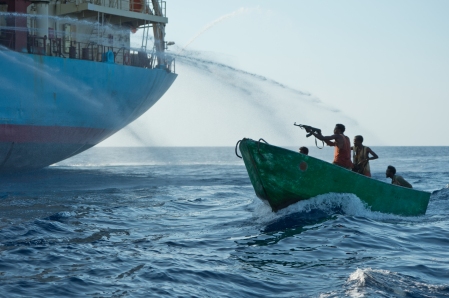
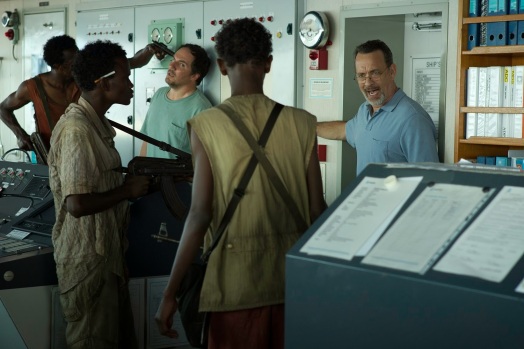
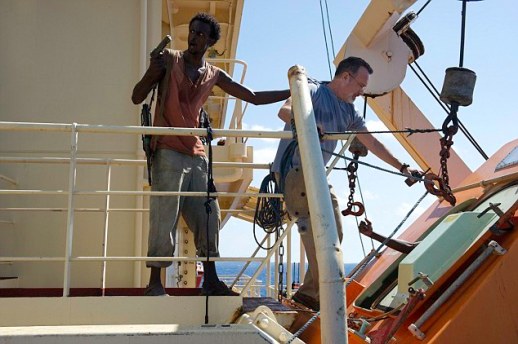
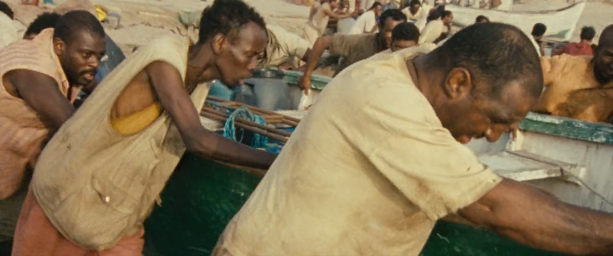
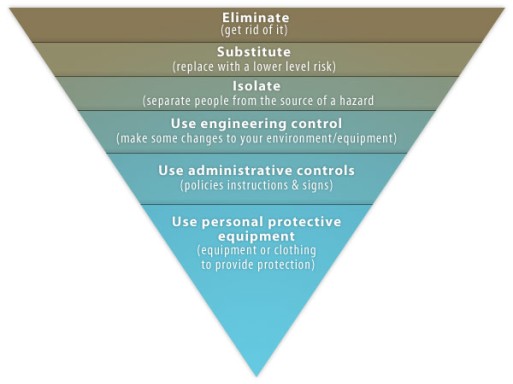
November 19, 2016 at 3:38 pm
I think it was unique to look at movies to conduct the risk analysis. The colourhairhazards used the movie captain Phillips to outline hazards but they did not highlight a common theme that follows Tom hanks.
TOM HANKS IS A HAZARD!!! The threat of danger and bodily harm is increased once travelling with Tom Hanks. His mere presence can be seen as a physical hazard as he causes planes to crash in open seas, ships to be hijacked as well as problems in space…
please visit this link below for visual representation of this issue:
https://onsizzle.com/i/one-thing-i-will-never-do-travel-with-tom-hanks-2283358
A humble observation 😉
LikeLiked by 1 person
November 25, 2016 at 8:03 pm
Thank you for your interesting thoughts on this, this link would definitely be viewed.
LikeLike